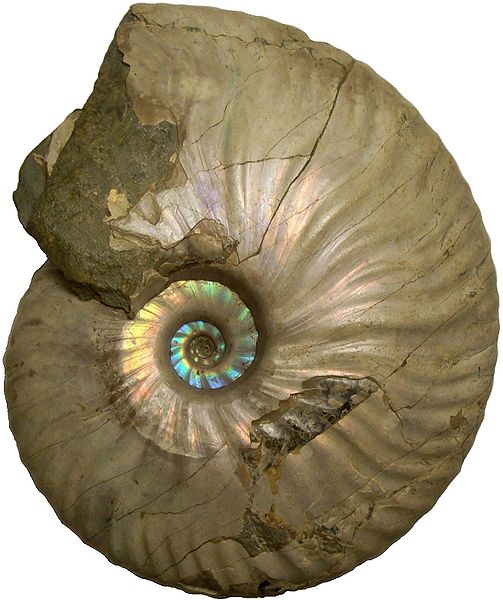4.6 billion years represents a very long time in geologic history. In order to make sense of this timescale, scientists have divided Earth’s history into smaller, more manageable units of time called eras. These eras are based primarily on the life-forms that lived during these specific periods of time in the Earth’s history. The fossil record provides us with the information that we need for this division of time. All of these eras together make up what is known as the geologic timescale, a record of the Earth’s history from its origins 4.6 billion years ago up to the present time.
As already mentioned, the geologic time scale is broken into four major units of time called eras. These four eras are all categorized by major worldwide changes in the fossil record.
- Precambrian Time: Precambrian Time ranges from the formation of the Earth 4.6 billion years ago to 542 million years ago. Life, in the form of single-celled organisms and simple multi-celled organisms, begins to develop by the end of Precambrian Time.
- Paleozoic Era: The Paleozoic Era covers the time period from 542–251 million years ago. During this time period invertebrates, fishes, and amphibians develop.
- Mesozoic Era: The Mesozoic Era ranges from 251–65.5 million years ago. It is characterized by the dominance of reptiles.
- Cenozoic Era: The Cenozoic Era extends from 65.5 million years ago up to the present time. It is characterized by the emergence of mammals as the dominant species.
Since Precambrian Time starts with the origin of the Earth and ends with the origin of life, it represents an unusually long time period. It actually represents about 88% of all geologic time.
Paleozoic: This word dates from 1838 and is based on the Greek word palaios meaning old, and the Greek word zoe meaning life. Paleozoic literally means old or ancient life.
Mesozoic: This word dates from 1840 and is based on the Greek word meso meaning between, and the Greek word zoe meaning life. Mesozoic literally means middle life, referring to its position as the era in the middle of the three eras with major life-forms.
Cenozoic: This word dates from 1854 and is based on the Greek word kainos meaning new, and the Greek word zoe meaning life. Cenozoic literally means new life, referring in particular to the emergence of mammals as the dominant life-form.
Learning Activity: Investigating Geologic Eras
In this activity, you will investigate how rocks from the four major geologic eras are distributed in Canada, the United States, and Mexico.
- Click here to view a map of all geologic eras.
Begin by locating where you live either by inspection, or by using the search function.
- What geologic era defines the rock in your home location? Answers will vary depending on exact location.
Use the measuring tool to measure your closest distance to rock from another geologic era.
- What distance are you from rock of another geologic era? Answers will vary depending on exact location.
- What geologic era is this rock from? Answers will vary depending on exact location.
- Click here to mark the location of several cities on the globe.
- From what geologic age does the rock from these cities date?
- Edmonton, Alberta Mesozoic
- Toronto, Ontario Paleozoic
- Halifax, Nova Scotia Paleozoic
- Sacramento, California Cenozoic
- Memphis, Tennessee Cenozoic
- Charlotte, North Carolina Precambrian
- Mexico City, Mexico Cenozoic
- What is/are the dominant geologic age(s) of the rocks found in these countries?
- Canada Precambrian, Mesozoic
- the United States of America Mesozoic, Paleozoic
- Mexico Cenozoic
- Click here to zoom on an interesting feature in northern Quebec.
- Describe the shape of this unusual landform in the center of your screen. It has a circular shape.
- What do you think that this landform is? It is probably a meteorite crater.
- During what geologic era was it created? Explain. This crater was formed during the Mesozoic Era. We know this because although the surrounding rock is Precambrian, there is a ring of Mesozoic rock defining the borders of the crater. This rock was probably formed during the actual impact of the meteorite. (The crater’s name is the Manicouagan Crater. It was formed about 214 million years ago during the Triassic Period of the Mesozoic Era.)

